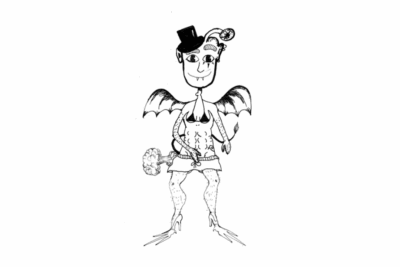There is a lot to appreciate when you go to the Westlawn Dining Hall – the smiles and hellos of Trudy, Elsie and the crew, an endless supply of chocolate milk and the likelihood of a great conversation with fellow Leaf diners. All of that, however wonderful, may not be my favorite part, though. What I can count on with the consistency of the Simpsons and the persistency of a chapel deficit is the clever stringing together of nouns, verbs and (especially) adjectives used to describe all those Rott fixin’s.
Whether it was Tuesday’s Balsamic St. Louis Ribs or Friday’s Tandoori Vegetables, the names used are only matched by the descriptors used to define these delectable dishes. It made me curious and even a bit hopeful; what if AVI wrote summaries for everything on campus? Like Schrock Plaza… dorm food… or a Kick-Off act? Here are a few items to get the imagination rolling.Broken Shield
Built and broken in 1981, it stands in solidarity with the battered to beaten-down in society. This “red beacon of hope” reminds Goshen students that even in cloudy times and cold times, there remains the possibility of sunny and sixty. Its construction brings to mind a rugged Canadian Elk, who has seen its fair share of hard times, but somehow survived and remained a bright, majestic icon of the forest. Served on a medley of fescue and bermuda.
Michal Stibor
Czech, fun-loving and quite sassy. His hair is styled in an “I don’t care and neither should you” sort of way, encouraging a carefree attitude that speaks on a deeper level to the more introspective among us. Always up for an adventure, Michal has been seasoned by 24 years in the cold European winters and brought here to campus for your enjoyment.
Ramen (or Spicy Kanji Ramen)
Salty, spicy, succulent and sultry are some of the words we came up with… and those were just some of the S’s. Cooked in an organic chicken broth, ladled with a chutney of celery and water chestnuts, providing an earthy, crisp flavor with undertones of bacon and delicious.
One of humankind’s greatest inventions, it ranks somewhere slightly above the wheel and only a notch or two below the ChiaPet. While its exact meaning is unknown, scholars (i.e. Wikipedia) maintain that while Ramen was first prepared by the Chinese, the original translation was lost sometime during the Mongol raids near the end of the Ming Dynasty. We maintain that it simply means mouthwatering.

